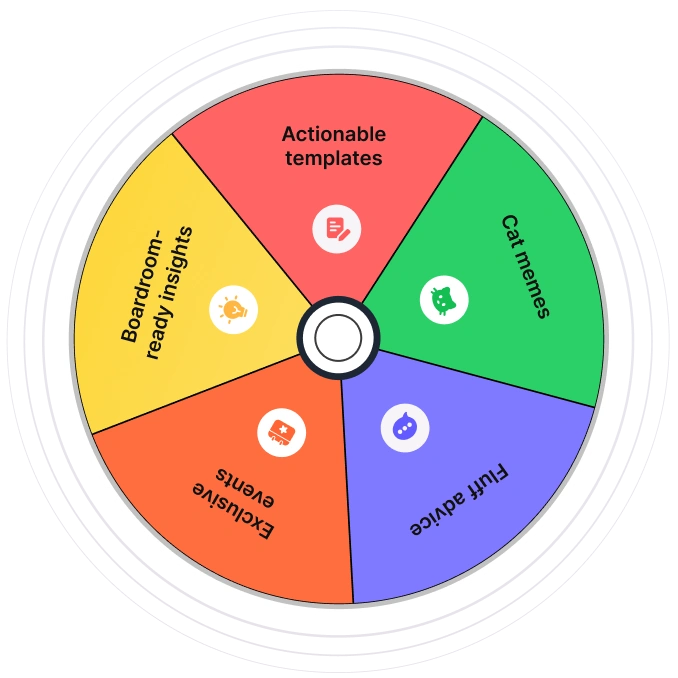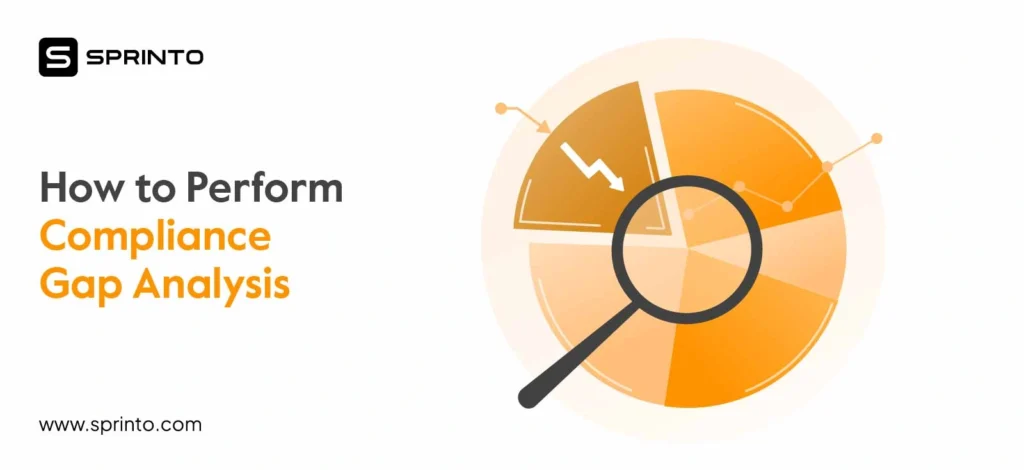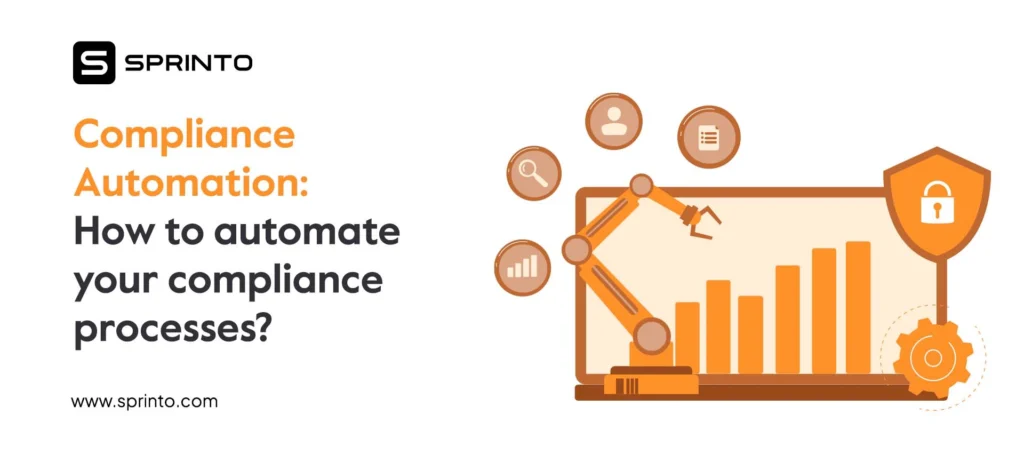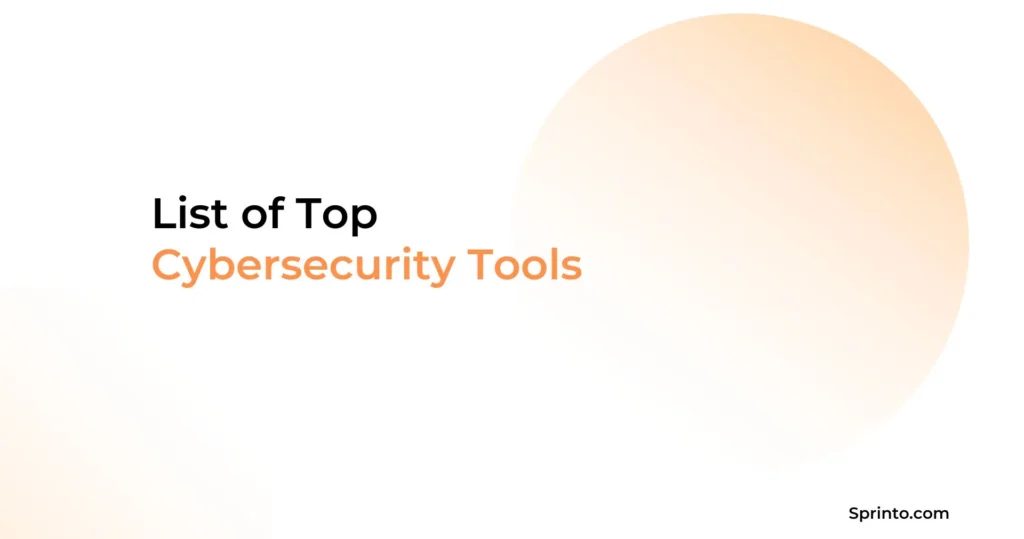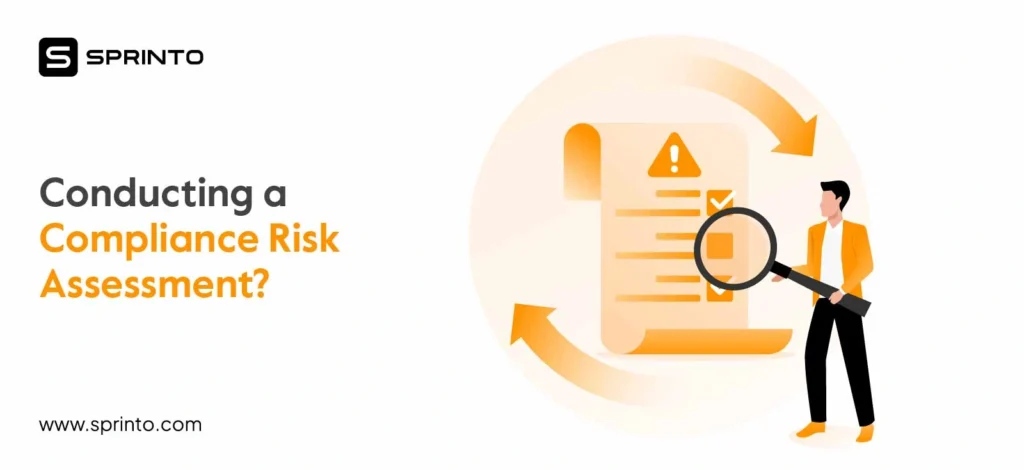Is your GRC process creating alignment, or adding more stress? Governance, Risk, and Compliance (GRC) are meant to give you confidence. But most of the time, GRC is built as an afterthought, with manual processes and disconnected tools.
This results in several critical issues later: when an incident has already played out, or when external partners start asking questions you’re not ready to answer.
When done right, your GRC framework serves as a backbone and not a burden. This blog will help you navigate the GRC framework, what it means and encompasses, why it matters, and how to make it work without slowing you down.
GRC Frameworks: A GRC framework outlines how organizations govern processes, manage risks, and stay compliant with internal and external regulations, all in a unified, structured way.
Core Components of GRC Framework:
• Governance – Aligns actions with goals through clear rules and accountability
• Risk Management – Identifies, mitigates, and monitors operational, legal, and security risks
• Compliance – Ensures adherence to regulatory and internal requirements
Importance of having a Well Structured GRC Framework:
• Prevents fragmented tools and processes
• Avoids manual overhead and reactive audits
• Improves trust, audit-readiness, and business agility
• Ensures proactive decision-making and resilience
Common Pitfalls:
• Manual evidence collection and risk tracking
• No real-time visibility into risk posture
• Misalignment between GRC and business goals
• Scaling pains when entering new markets or frameworks
Best Practices:
1. Align GRC with business goals
2. Define clear roles and responsibilities
3. Assess and prioritize risks early
4. Implement practical, scalable controls
5. Automate wherever possible (evidence, risk scoring, control monitoring)
6. Continuously monitor, adapt, and improve
Popular Frameworks: ISO 27001, NIST CSF, ISO 31000, COSO ERM, CMMC
Why Sprinto for GRC?
Sprinto automates policies, risks, evidence, and control monitoring by integrating across your tech stack.
What is a GRC framework?
GRC consists of three main components: governance, risk, and compliance. Together, they form the core capabilities every organization needs to address risks, meet regulatory requirements, and operate with accountability and transparency.
In other words, a GRC framework outlines the structure and strategic direction for rolling out governance, risk, and compliance processes.
Let’s now break down the three core areas of GRC:
1. Governance
Governance is the collection of rules, responsibilities, policies, and processes that align corporate activities and efforts with business goals. A strong governance system aligns business and compliance goals, ensuring every operational decision supports regulatory obligations. It defines how decisions are made, allocated, and communications with stakeholders occur.
Good governance ensures:
- Clear understanding of roles and responsibilities, i.e., who owns what
- Checks and balances to prevent the concentration of power
- Balance between the needs and interests of stakeholders, from leadership to employees, and external partners
- Supervision over infrastructure, like the tech stack that supports your business goals
2. Risk management
It’s extremely important to spot problems before they turn into disasters. Risk management is the process of spotting, assessing, controlling, and managing security, legal, financial, and strategic risks to your business. The main goal is to minimize risk and build more value.
A solid risk management program not only prevents threats, but also:
- Keeps tabs on vulnerabilities like unsafe apps, aging infrastructure, or password fatigue
- Ensures risk awareness while staying aligned with your company’s business objectives and stakeholders
- Assess legacy systems and overall system performance and effectiveness
- Builds systems to monitor and mitigate risks
- Helps you meet legal, ethical, and regulatory standards
3. Compliance
Compliance ensures that your business is always playing by the rules set by external regulations, government policies, and internal policies, such as TISAX, ISO, HIPAA, SOX, and many more.
A good compliance management program:
- Covers all the crucial compliance frameworks that are applicable
- Educates and trains employees and stakeholders to understand and follow policy requirements
- Monitors policy adherence and adoption across teams
- Helps you stay audit-ready and responsible
- Spots critical risk areas and allocates resources accordingly
Governance sets the direction, risk management identifies the threats, and compliance ensures you stay on track. A GRC framework ties it all together, so nothing goes wrong.
The case for building a solid GRC framework
What is the best time to invest in a GRC framework? It is now, when things are moving smoothly and steadily. You don’t have to wait for threats, audits, deal requirements, etc. to show up, so you can finally set things in motion.
Some of the most prominent organizations learned this the hard way. Not because they were reckless, but because the right structures weren’t in place early enough.
Take the example of the crisis involving Boeing 737 Max aircraft. The fatal air crashes in 2018 and 2019 exposed compromised safety standards and regulatory oversights, resulting in millions of dollars in fines and lost revenue.
Citigroup’s $900 million transfer mistake is another example. A single mistake caused by the bank’s outdated systems and weak internal controls revealed the importance of an up-to-date GRC setup.
These failures clearly reveal how a GRC implemented early and intentionally can help you with:
- Centralized information: A GRC framework serves as your single source of truth for all information related to compliance requirements, risk management, and policies and processes.
- Streamlined operations: There’s less chaos and more coordination between your risk, compliance, and governance processes. It breaks down silos, helps teams collaborate better across teams and brings efficiency to everything from policy rollouts to audits.
- Faster, confident decision-making: The right GRC approach offers full visibility into your risks, controls, and compliance gaps. This equips leadership teams to make smarter decisions without second-guessing.
- Built-in trust and accountability: Trust becomes a part of your operation, across audits, funding rounds, and deal closures. A solid GRC framework shows that your organization takes integrity and resilience seriously.
Knowing the value of a GRC framework is one thing, but getting it to work well in practice is another. Here’s what tends to get in the way.
Challenges to making GRC work
Let’s face it, GRC can get complicated fast. It’s a system that needs to work across people, processes, tools, and timelines. Making GRC work can be a struggle unless these moving parts are aligned.
Here are some of the common hurdles that make GRC harder than it should be:
1. Fragmented GRC processes
Is your team using different tools and processes for risk, audit, and compliance? If your GRC processes live in different tools with various owners, it’s likely to slow things down and cause confusion.
2. Operational overhead due to manual tasks
Tasks like evidence collection, control monitoring, and risk tracking are often done manually. This takes hours of someone’s time and often falls to whoever has capacity.
3. No real-time visibility
There’s a lack of visibility into your risk posture, which forces teams to work reactively. By the time something surfaces, it is already a problem. Without live dashboards or alerts, your team is always catching up.
4. Last-minute audit scrambles
If your audits feel like a fire drill each time, then it’s time to make some serious changes to your GRC framework. Collecting evidence, nudging task owners, and updating docs at the eleventh hour isn’t sustainable. A well-structured GRC system removes the last-minute panic and ensures you’re ready by default.
5. Misalignment between GRC and business goals
When GRC programs are built in isolation from business goals and operations, they become more of a bottleneck than an enabler. They add steps and slow down processes, especially when they’re not aligned with how your business runs.
6. Scaling adds complexity
Entering new markets, geographies, industries, or business lines brings layers of requirements. The absence of a scalable GRC framework makes it much harder to implement.
If any of this sounds familiar, you’re not alone. A thoughtful, well-structured GRC framework can restore clarity, control, and calm to the process.
How to build a GRC framework
When businesses start to grow, things become more complex with more tools, people, and naturally more scrutiny. GRC should not be an afterthought in that mix; nor should it be a bottleneck.
Here’s how to build a GRC framework that scales with your growth and helps you stay resilient.
1. Identify your business goals and objectives
Start with the big picture. Before you implement policies or tools, clarify your business’s goals. Is it growth, expansion, funding, or operational excellence? Your GRC framework should support these goals.
Once you’ve mapped out your business goals, you must understand compliance/risk-related requirements. This will help you understand where GRC needs to show up for you. You can ask these questions to get more clarity:
- Which risks matter the most?
- Which regulations apply to your business?
- What level of visibility do you need into your GRC processes?
Align your GRC framework to measurable outcomes like faster audit cycles, better visibility into your risks and compliance health, or fewer threats. Getting stakeholder buy-in is much easier when GRC ties directly to business outcomes.
2. Map out roles, responsibilities, and decision paths
GRC works best when everyone knows who’s responsible for what. Clear roles and decision paths help everyone take ownership of compliance and stay aligned on business goals. This involves locking in on three very important layers:
- Who makes the calls: Make it clear who’s responsible for risk and compliance decisions, so there’s no unnecessary back and forth.
- Who owns what: Assign people to oversee implementation and keep things moving.
- What runs on autopilot: Controls, checks, evidence collection, etc. automate routine tasks to be more efficient and reduce errors.
3. Identify and assess risks early on
Risk assessment isn’t something you put off. Spotting your vulnerabilities at the right time is crucial to prevent penalisation, financial losses, or operational setbacks. Spend time trying to identify potential business risks, including operational, security, compliance, and third-party risks.
Use industry benchmarks to guide your risk assessments and understand what’s considered high or low risk in your space. Here’s a pro-tip: you can involve different teams to get multiple perspectives and insights on where things could go wrong.
Identifying risks gives you control over compliance and the quality and resilience of your business operations.
4. Set up controls that are practical (and followable)
Controls are the guardrails companies use to reduce risk and ensure compliance. Consider action steps like checklists, policies, access restrictions, or approval policies that serve as a defense layer.
Controls may be manual or automated, but they work towards reducing uncertainty and preventing issues. These controls can take many forms, depending on their purpose, namely preventive, detective, and corrective controls.
If you’re working with frameworks like ISO 27001 or SOC2, this step is where you align with those requirements.
5. Use tools to automate the painful stuff
Here’s the truth: GRC breaks down when it relies too heavily on manual processes. The sooner you automate key parts like evidence collection, risk tracking, or control monitoring, the more efficient and accurate your program will be.
This is where GRC software comes in, not to add overhead but to eliminate redundant workflows that slow you down.
Sprinto is a tool built with adaptive automation capabilities for nudging team members, organizing, and collecting evidence. It integrates with your existing tech stack, runs automated checks, and helps you scale your GRC efforts without starting from scratch.
The best part? It supports 20+ compliance frameworks and custom programs that help you establish a strong security posture.
6. Monitor and improve continuously
GRC is not a one-and-done project. Conduct regular check-ins, reviews, and updates. Risks evolve, new risks may appear, regulations get updated, and your teams grow.
Isn’t it natural that your systems should adapt, too? Set regular review cycles to fix issues early on, not after they’ve caused damage. A reliable GRC tool like Sprinto can help you stay on top. It will help you see where compliance is slipping, what needs updating, and make it easier to stay aligned across teams. That’s how you build a system that scales with your business, not against it.
Key roles and responsibilities in GRC
A GRC framework is only as strong as the people behind it. GRC is a shared, company-wide play involving leadership, compliance, IT, legal, and HR teams. Here’s typically who owns what in a modern GRC setup:
Board and executive leadership
They set the strategic direction and ensure your GRC setup aligns with business objectives.
Chief financial officer
Finance leaders ensure compliance with financial regulations such as SOX and are critical in managing an organization’s financial risk.
Chief risk officer
These leaders are responsible for identifying threats, defining risk appetite, and mitigating threats.
Chief compliance officer
The compliance leaders oversee compliance efforts, including training and communication, without creating unnecessary red tape.
Chief information security officer
CISOs and IT heads look after risks at the level of your systems to ensure business continuity. This includes data protection, access controls, and continuous monitoring.
Legal
Your legal team is responsible for interpreting rules and contracts, managing regulatory changes, and ensuring internal policies are within regulatory boundaries.
HR
HR teams help build a culture of compliance through training, code of conduct sessions, and ensuring policy roll-outs.
Department heads
Functional heads are responsible for implementing the GRC within their respective departments and ensuring that their teams follow the broader framework.
Employees
Finally, employees at large are expected to contribute by following rules and policies, reporting issues, and staying informed.
Examples of GRC frameworks
If you’re looking to build a GRC framework that holds up under scrutiny, it always helps to lean on proven frameworks. Here are some of the commonly implemented GRC frameworks you need to be aware of:
1. COSO ERM
The Enterprise Risk Management framework by the Committee of Sponsoring Organizations of the Treadway Commission focuses on integrating risk management into every department, function, and process.
It encourages proactive risk management and ensures alignment with business objectives.
2. NIST Cybersecurity framework
The NIST CSF breaks cybersecurity into 5 broad functions— identify, protect, detect, respond, and recover. It is ideal for companies looking to mature their security programs.
3. ISO 31000
This global standard provides guidelines on managing all types of risks, including strategic, reputational, operational, etc. It provides a clear and flexible way to spot and handle risks without overcomplicating them.
4. CMMC
The Cybersecurity Maturity Model Certification is designed for building layered security. It helps companies by providing a roadmap for maturing security, from basic cyber hygiene to highly mature security protocols.
These are just a few commonly used frameworks. Check out our blog to learn about more such compliance frameworks.
Put your GRC on autopilot with Sprinto
As compliance tasks multiply and risk visibility gets blurry, you need a unified GRC approach that brings clarity, speed, and accountability. With minimal lift, Sprinto adds structure, momentum, and automation to your GRC workflows.
With 200+ integrations and over 20 compliance frameworks, Sprinto replaces scattered tools with a connected system that helps you prevent issues and not just stay compliant.
And the best part? You get the full picture, real-time updates, and a solid security posture.
FAQs
1. What are the components of a GRC framework?
The three core components of a GRC framework are governance, risk management, and compliance.
2. How to build a GRC framework?
A well-built GRC framework can be built by following these steps:
- Aligning GRC efforts with business goals
- Defining roles, responsibilities, and decision paths
- Identifying and assessing risks
- Implementing controls and policies
- Deploying the right tools
- Monitoring and improving continuously
3. What is an example of a GRC framework?
Well-known GRC frameworks include ISO 27001, NIST CSF, CMMC, ISO 31000, and HIPAA. While each serves a different purpose, they work towards the same goal of a stronger, smarter security posture.
Anwita
Anwita is a cybersecurity enthusiast and veteran blogger all rolled into one. Her love for everything cybersecurity started her journey into the world compliance. With multiple certifications on cybersecurity under her belt, she aims to simplify complex security related topics for all audiences. She loves to read nonfiction, listen to progressive rock, and watches sitcoms on the weekends.
Explore more
research & insights curated to help you earn a seat at the table.






